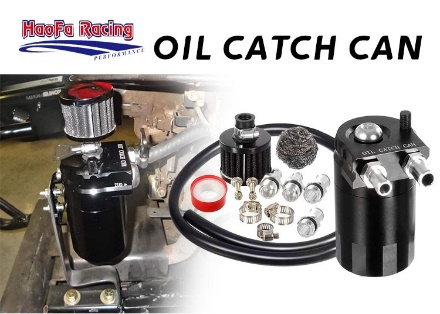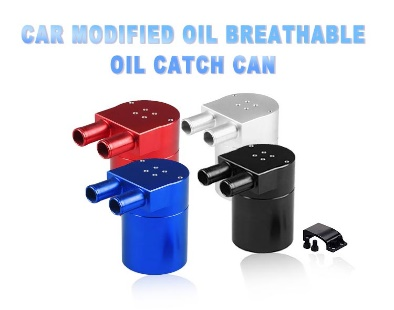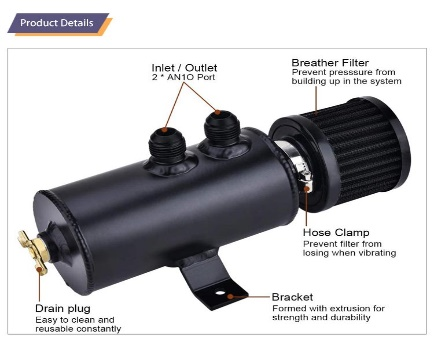As you can see, there are many oil catch cans available on the market and some products are better than others. Before purchasing an oil catch can, here are some important factors to take into consideration:
Size
When selecting the correct size oil catch can for your car, there are two important things to consider – how many cylinders are in the engine, and does the car have a turbo system?
Cars with between 8 and 10 cylinders will need a large size oil catch can. If your car only has 4 – 6 cylinders, a regular-sized oil catch can should suffice. However, if you have 4 to 6 cylinders but also have a turbo system, you may need a large oil catch can, like you would use in a car with more cylinders. Larger cans are often preferable as they can hold far more oil than smaller-sized cans. However, large oil catch cans can be difficult to install and can be cumbersome, taking up precious space under the hood.
Single or dual valve
There are single and dual valve oil catch cans available on the market. A dual valve catch can is preferable as this can has two outport connections, one at the intake manifold and another at the throttle bottle.
By having two outport connections, a dual valve oil catch can will work when the car is both idle and accelerating, making it more efficient as it can clear more contamination throughout the engine.
Unlike a dual valve oil catch can, the single valve option only has one out port at the intake valve, meaning no contamination after the throttle bottle is filtered out.
Filter
An oil catch can works by filtering oil, water vapor, and unburnt fuel in the air that circulates around the crankcase ventilation system. For an oil catch can to work effectively, it needs to include a filter inside.
Some companies will sell oil catch cans without a filter, these products are not worth the money are all but useless. Make sure the oil catch can you intend to buy comes with a filter inside, an internal baffle is best for separating contaminants and clearing the air and vapors.



Post time: Apr-22-2022
